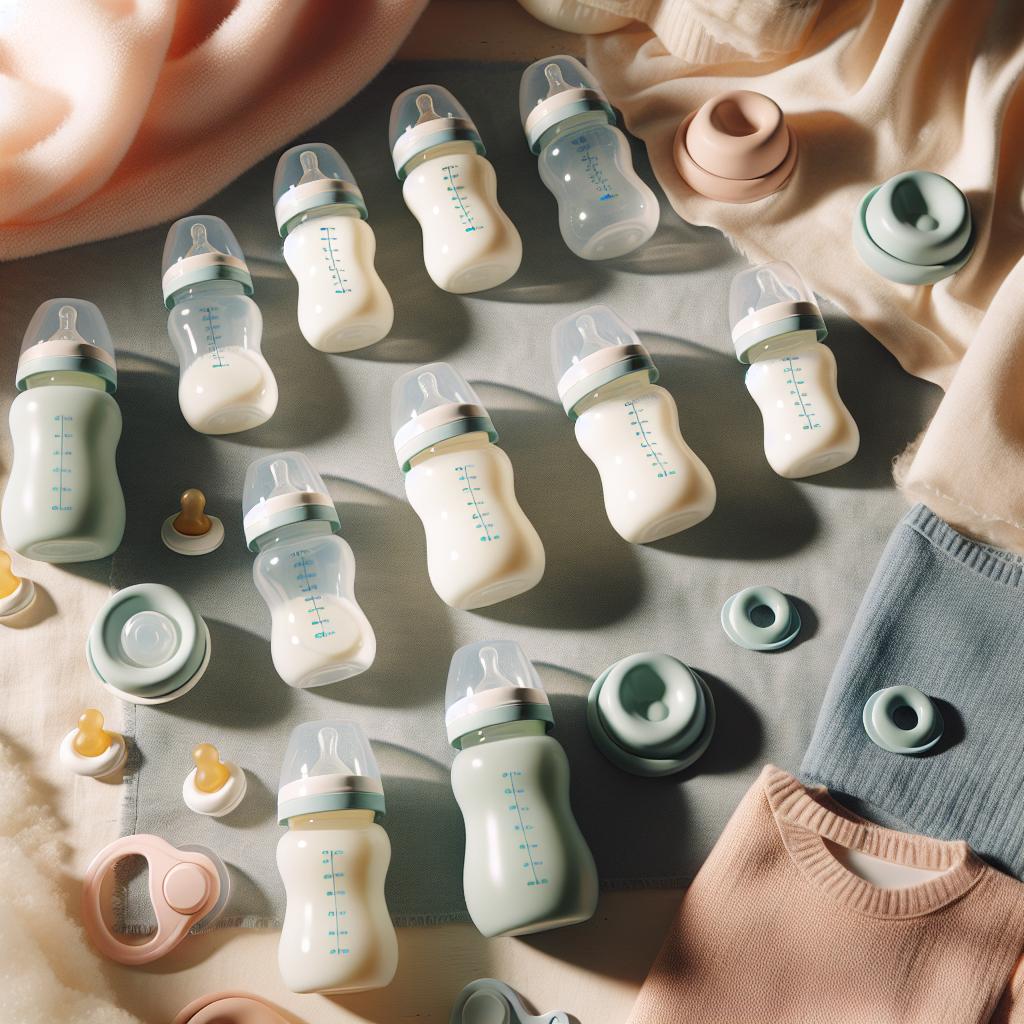Unlocking the Secret to Optimal Baby Feeding Routine
As a new parent, you’re probably inundated with a flurry of advice about everything from healthy eating for kids to the best ways to soothe your child’s crying. Amidst all the information, one piece of advice is indisputable – establishing a solid baby feeding routine is crucial for your child’s growth and development. However, the question remains – are you incorporating the right elements into this routine?
The Good, the Better, and the Essential
Consider this: when it comes to feeding your baby, it’s not just about ‘what’ and ‘when,’ but also ‘how.’ So, what is this elusive ‘how’ that your baby’s feeding routine might be missing?
- Posture and Skin-to-Skin Contact: Feeding times should also serve as a bonding opportunity. Adequate skin-to-skin contact, as advocated by the World Health Organization, can make this a comforting experience for your baby, improving their overall feeding experience. The correct posture can also aid digestion and prevent issues like gas and colic.
- Safety and Hygiene: Ensuring the feeding equipment used is clean and safe is crucial. This might include sterilizing bottles and pacifiers or making sure the breast pump is cleaned correctly.
- Responsive Feeding: Paying attention to your baby’s hunger and satiety cues can help you understand how much and when they need to be fed. This approach, often referred to as responsive feeding, can lead to healthier eating habits as your child grows.
Setting the Stage for Enhanced Feeding
After getting a handle on the ‘how,’ it’s time to zoom in on the tools you’re using to feed your baby. This is where biomimetic bottles come into play. If you’re wondering about the safe feeding choice that parents love, these bottles offer an answer.
Biomimetic bottles are designed to closely mimic the breastfeeding experience for both mother and child. They can be a great addition to your baby feeding routine, helping to make the transition between breastfeeding and bottle feeding smooth and stress-free.
Why Choose Biomimetic Bottles?
- They offer the perfect balance of safety and comfort – thanks to their unique design that closely mimics the natural breastfeeding experience.
- They have been produced using strict HACCP guidelines ensuring the utmost safety for your baby.
- These bottles are specially designed to secure the perfect feeding experience, reducing the likelihood of colic and gas.
Adding biomimetic bottles to your baby feeding routine can give you the ease of breastfeeding and the convenience of traditional bottle feeding, all while ensuring your baby’s comfort and health.
Embracing a Holistic Approach
As parents, we always want what’s best for our children. By incorporating a holistic approach to your baby feeding routine, you’re not only nourishing your child’s body, but also fostering their emotional well-being. It’s all about taking that extra step and making informed choices, whether it’s choosing the right feeding method or just ensuring a comfortable ambiance for feeding sessions.
As they say, parenting doesn’t come with a manual. But with these essential feeding tips under your belt, you’re well on your way to providing the best care for your little one.
Meeting Nutritional Needs
Another crucial aspect of optimal baby feeding is ensuring your child is getting the right mix of nutrients. All forms of milk—breast milk, formula, or cow’s milk—contain some of the key nutrients needed by a rapidly growing baby. However, you may need to supplement their diet with other substances, such as vitamin D, if your baby is exclusively breastfed and you live in a region with low sunlight. Research has shown that breast milk does not provide adequate amounts of this crucial nutrient.
Stick to recommended feeding quantities and keep an eye out for your child’s hunger cues, which can include rooting, hand-to-mouth movements, or sucking on fists.
Creating a Peaceful Feeding Environment
How calm and settled your little one feels during feeding can also play a major role in how well they feed. A study published in the JAMA Network shows that babies who are exposed to high levels of stress during feeding times might not gain weight appropriately.
Create a quiet and relaxed environment away from noise and distraction where possible, and ensure you are in a calm state yourself. Soothing music or the sound of a gentle fan can also be used to create a peaceful ambiance.
Understanding Growth Spurts and Changes in Appetite
All babies grow at their own pace, but most will have periods of rapid growth, commonly called growth spurts, where they might eat more. According to research on infant growth patterns, these growth spurts tend to occur at around 3 weeks, 6 weeks, 3 months, and 6 months of age.
It’s important to remember that during these periods, your baby may show increased hunger and should be allowed to feed more frequently or for longer sessions.
Pediatrician’s Guidance is Key
While all these tips provide a great starting point, each baby is unique and what works best could differ. Therefore, consulting your pediatrician and incorporating their guidance is key. They can help you create a customized feeding plan that takes into account your child’s specific needs and preferences. They can also provide guidance on issues like responsive feeding, nutrient supplementation, and how to recognize and tackle feeding problems.
For example, specific guidance for premature babies might differ from that suggested for full-term babies, hence it is advisable that you go through the manual on premature babies policy.
With information overload, it can indeed be bewildering to figure out the best baby feeding routine. But armed with these insights and the guidance of your pediatrician, you can create the optimal routine that works for you and your baby.






